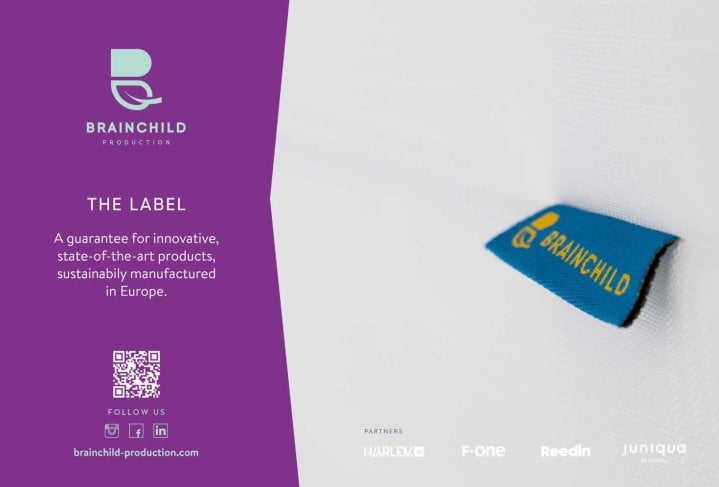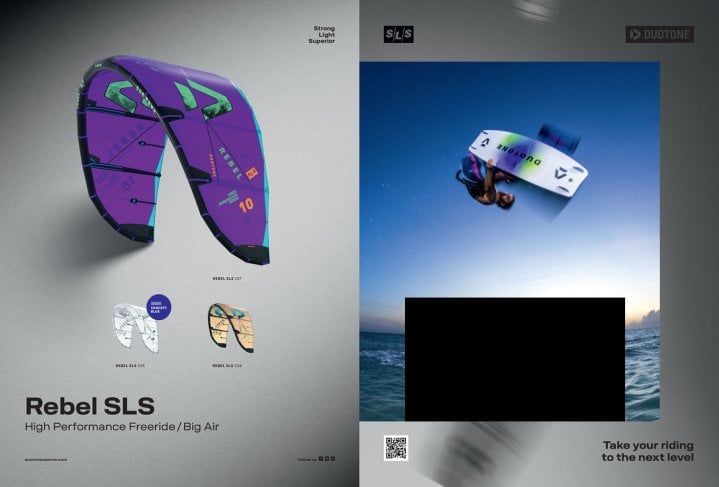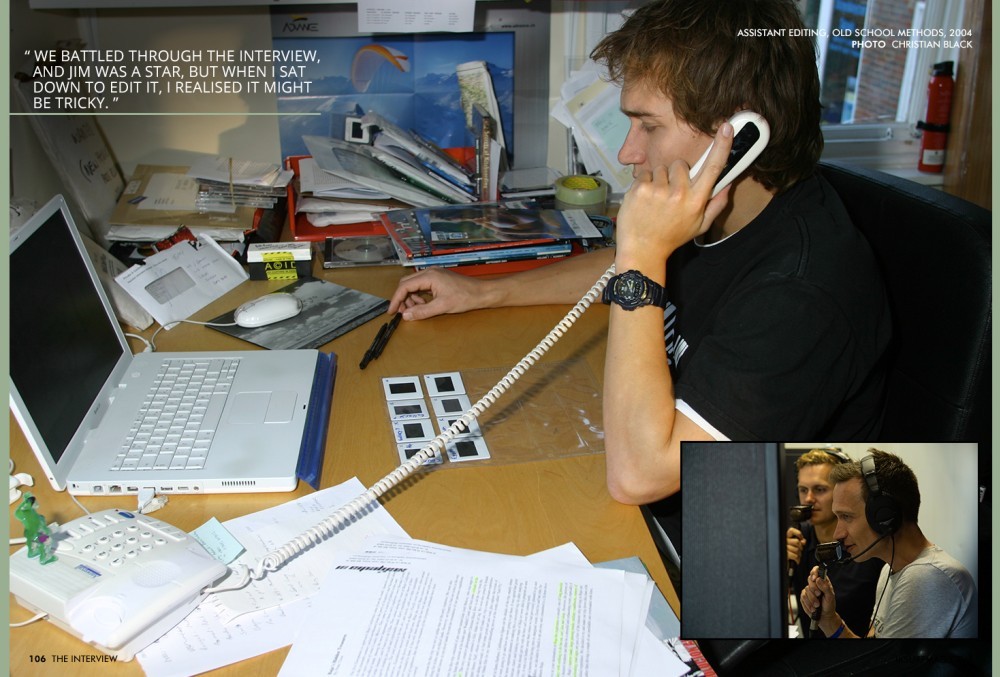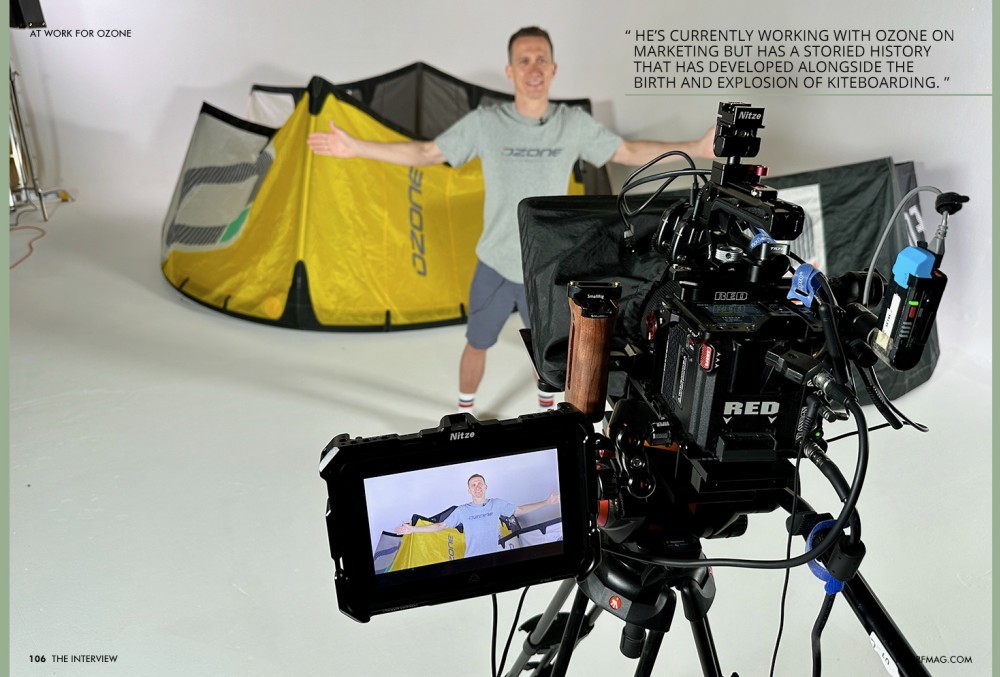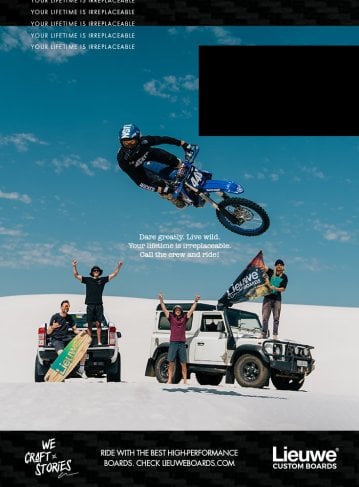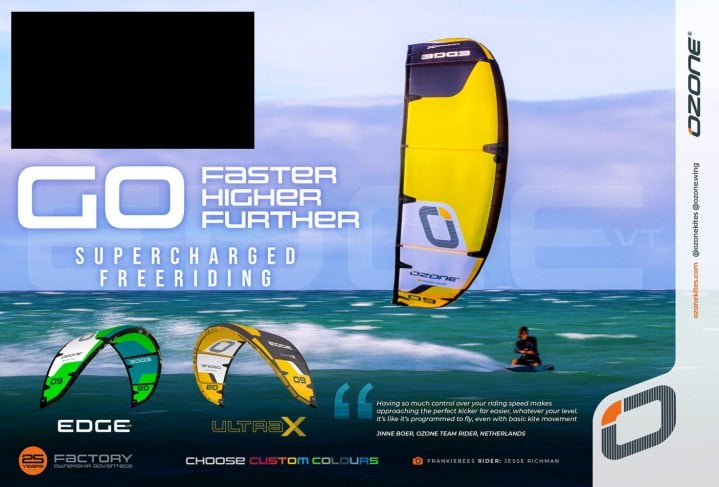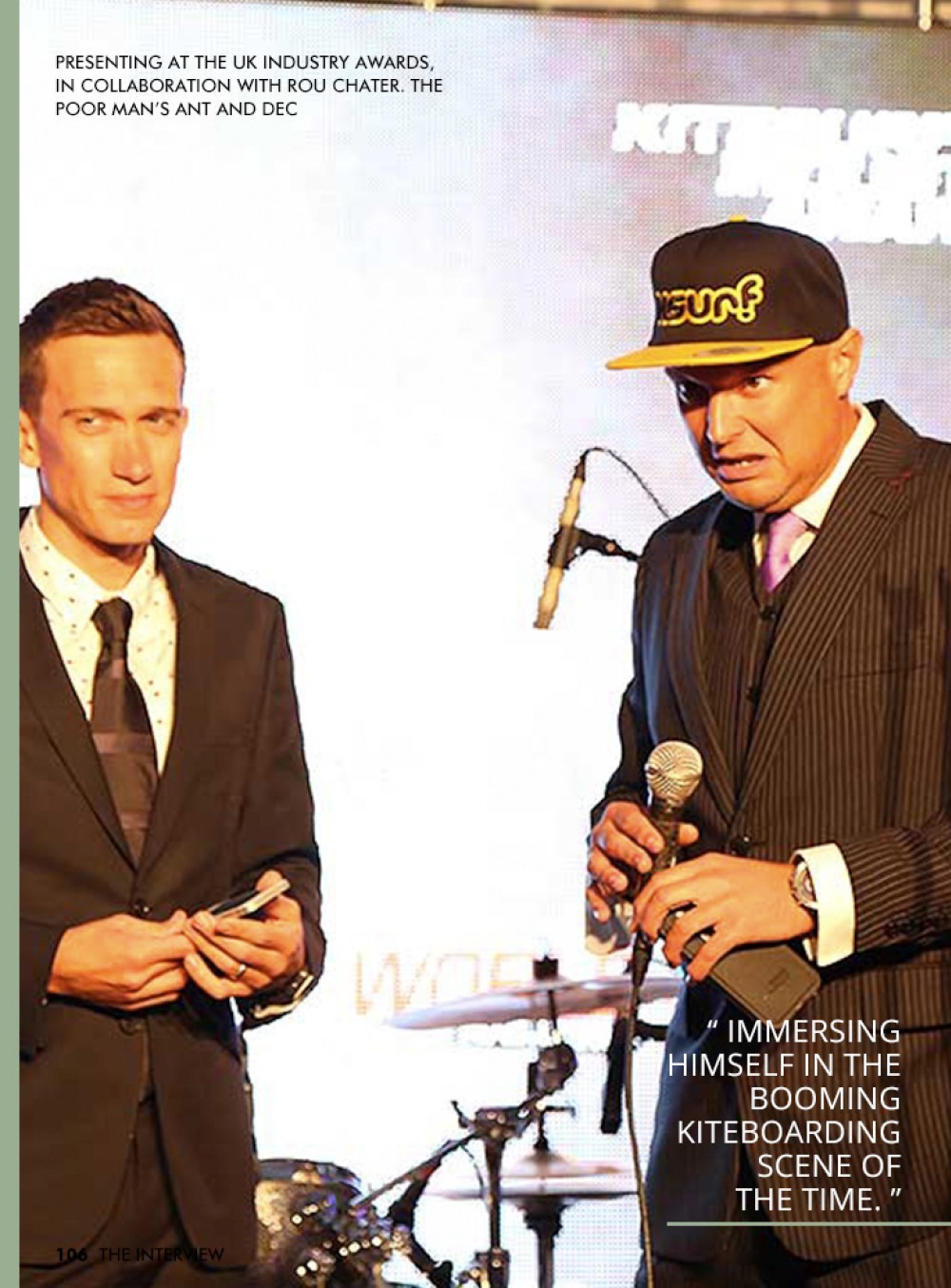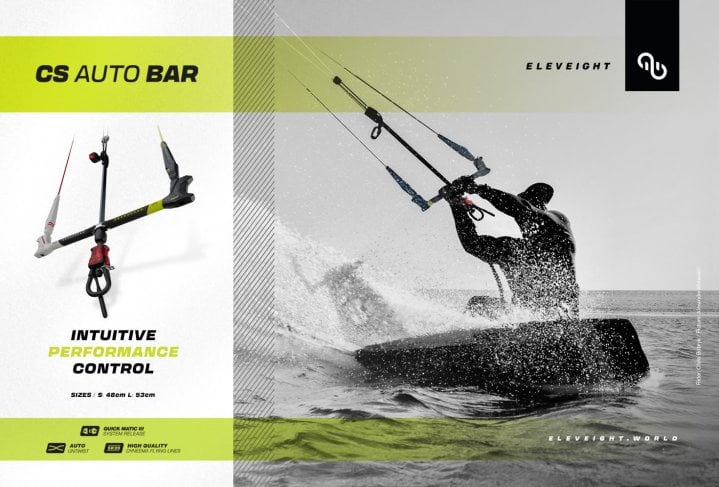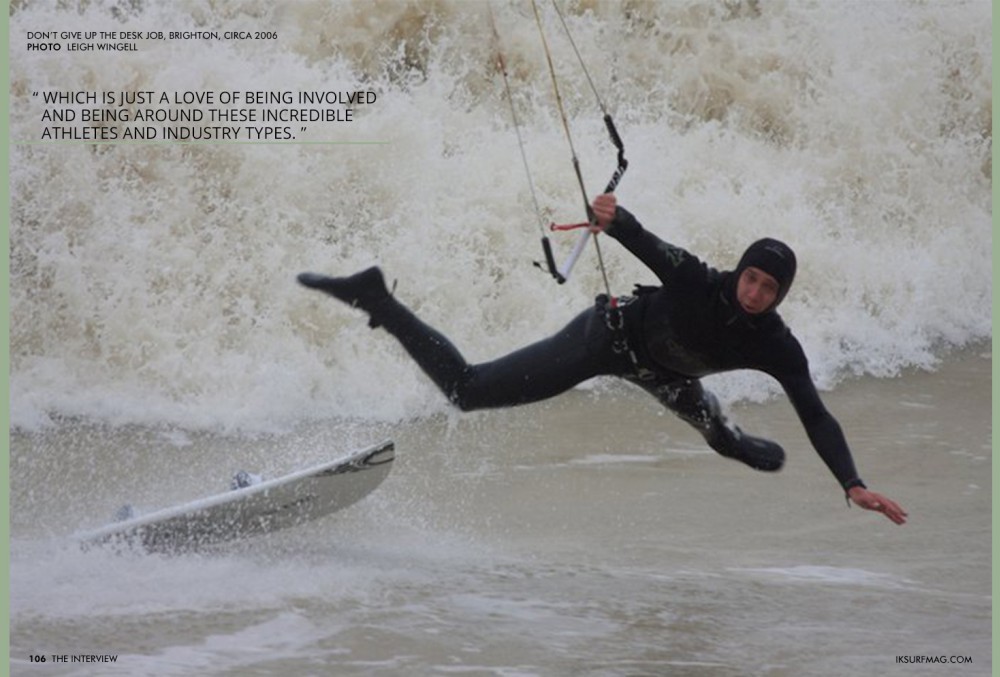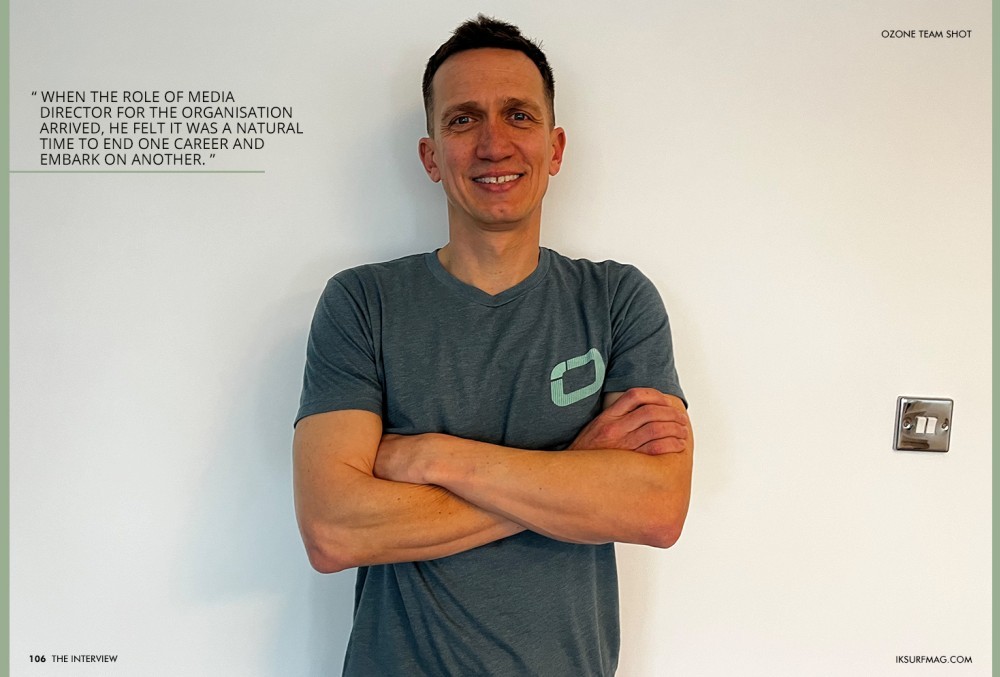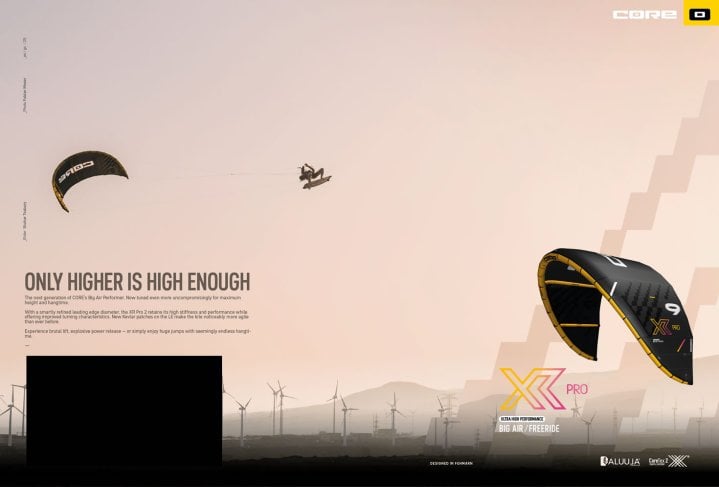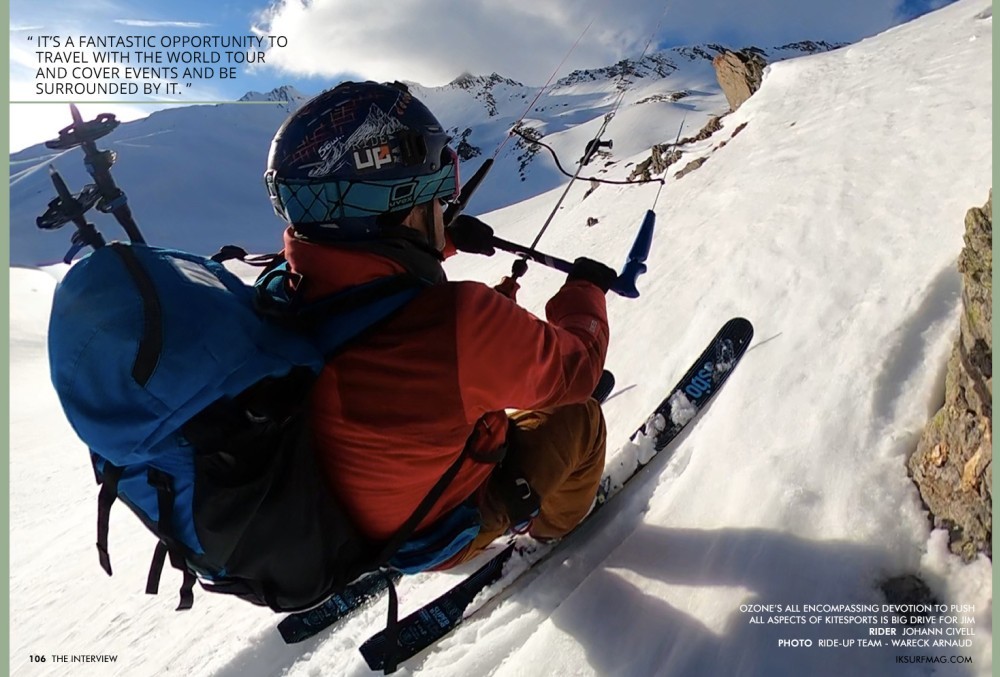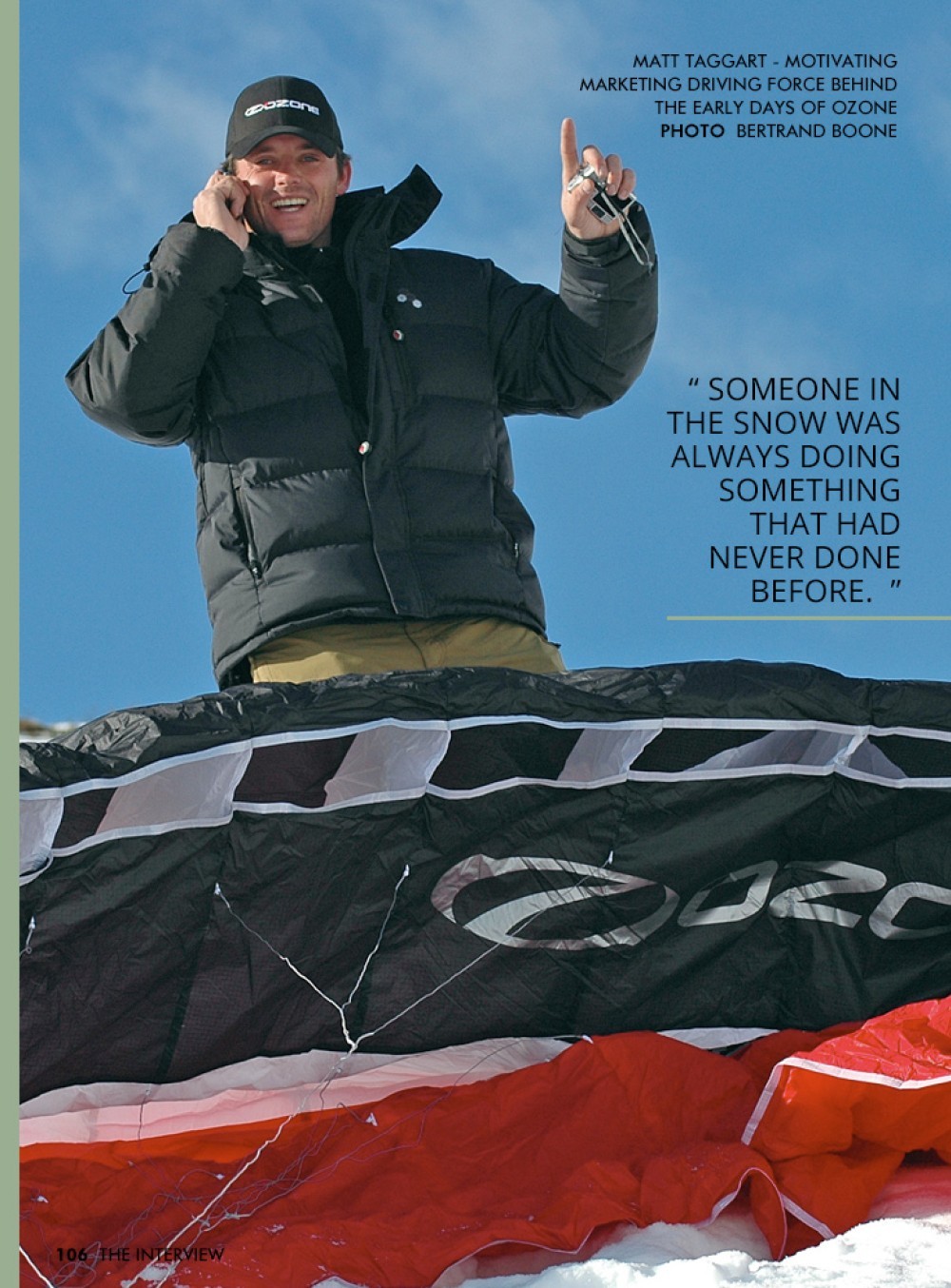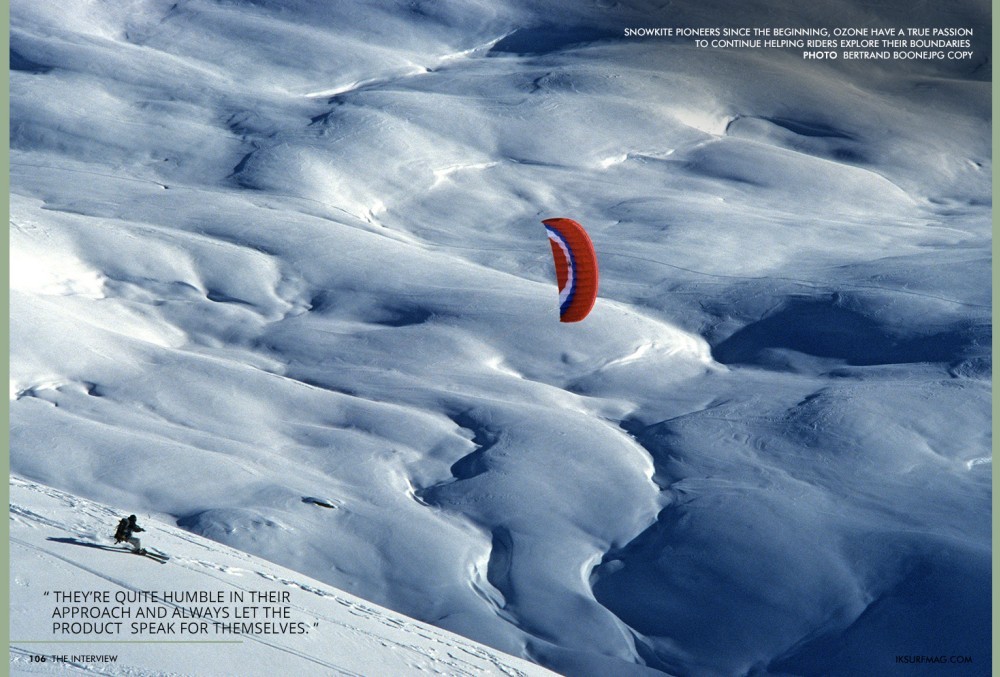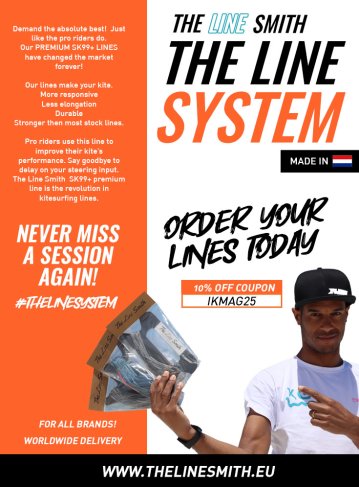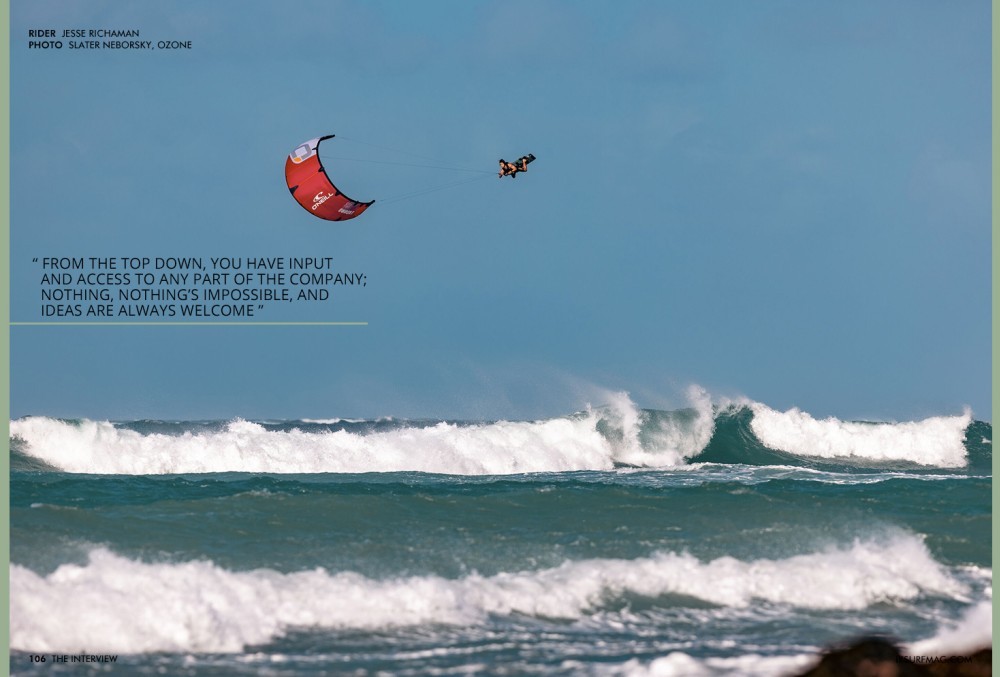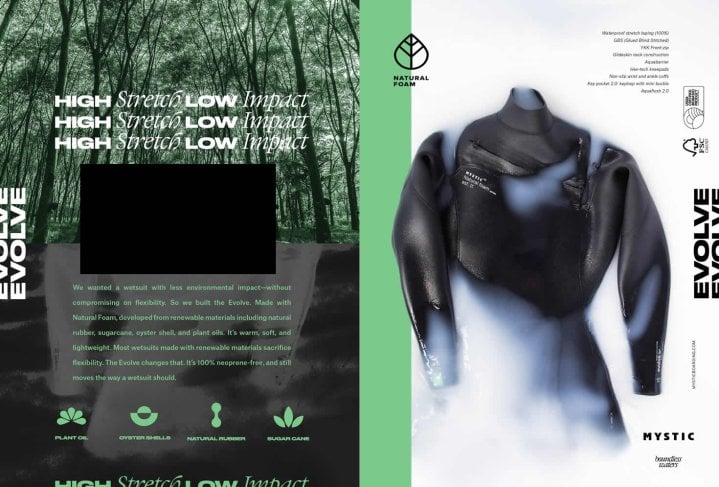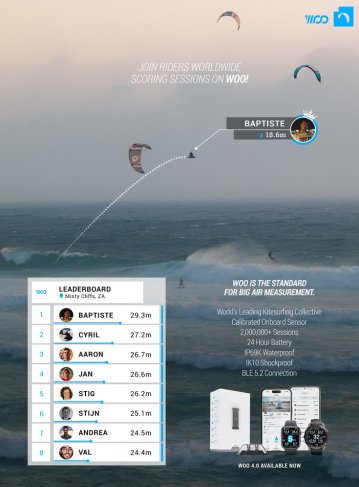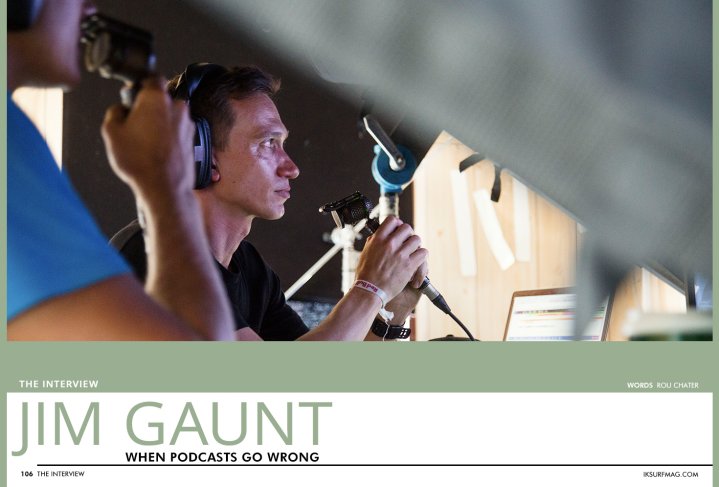
The Interview - Jim Gaunt - When Podcasts Go Wrong
Issue 106 / Wed 28th Aug, 2024
Rou Chater gives us a glimpse into the ups and downs of living in Wales and the challenges like constant rain and unreliable internet—a fact Rou discovered during a recent podcast recording with Jim Gaunt for this issue's 'The Interview'! Despite technical setbacks that left the recording unusable, Rou found inspiration in Jim's history in the kiteboarding industry, from his beginnings in windsurfing to his role as the Editor and Publisher of Kiteworld Magazine to joining the Ozone team. We've got it all right here!
Rou Chater sits down with Jim Gaunt for a podcast, but the Welsh weather and the internet have other ideas…
Living in Wales has many advantages. The surf is incredible; it’s windy most of the time, so that we can kite a lot, and there aren’t many people. Paradise is never perfect, though. It rains almost every day, and because we are so remote, life staples such as the internet and a decent mobile phone signal are sometimes rather elusive.
I have a decent full-fibre connection at the office, but the office is set on 45 acres of farmland, so it’s easy for things to go wrong. Usually, the connection is fine unless the weather is terrible, which is most of the time. Last week, I sat down to do a podcast with my good friend Jim Gaunt and used Riverside FM, an online podcast tool. It records audio locally at both ends of the connection and then merges them. It’s great, but it decided to have a meltdown last week.
We battled through the interview, and Jim was a star, but when I sat down to edit it, I realised it might be tricky. About three hours into the edit, I realised we might have a problem, and after eight hours, I decided to give up before having a brainwave that took two hours but didn’t work. About ten hours invested, and I’d come up with nothing broadcastable.
The issue was on my end; the audio was poor quality despite using high-end recording equipment, and even worse, there were delays, overlays, and dropouts. Then, in the last two-thirds, only about ten minutes of my track was recorded compared to the hour or so of Jim. It was time to admit defeat. However, the plan was always to do a story on Jim and his journey in the kite industry and with more than enough ammo from a lifetime of working alongside him, I figured I could create a noteworthy piece all the same; after all, I have Jims full two-hour transcript so now I can make up my side so I sound even better…
If you’ve never heard of Jim Gaunt in the kite industry, you might have lived under a rock. He’s currently working with Ozone on marketing but has a storied history that has developed alongside the birth and explosion of kiteboarding. Jim is most famous for his role as the Editor and Publisher for Kiteworld Magazine, which was the go-to print media for our sport for 20 years. It was there at the beginning, and I’m genuinely sad it is no longer there.
But how did that all come about? Well, even though he’s a few years younger than me and looks a lot younger and skinnier than me, we could have led double lives… Jim learned to windsurf at a young age, taught by his father, just like me; he then worked as a windsurfing instructor in Manly, Australia, at the same windsurfing school I’d worked at. Our paths had never crossed at this stage, but we shared a tenacious passion for teaching windsurfing and doing the sport ourselves.
Jim even taught at AquaSports in Surrey, where I’d taken my first windsurfing instructor course! These are the sorts of parallels you couldn’t make up, but I guess the watersports world is small. Jim used to spend his winters windsurfing in South Africa. In 2001, he met Hugh Miller, who was there with none other than Aaron Hadlow, Rob Claisse, Stav Thraves and a few other kiting pioneers from back in the day. Hugh was the publisher of the newly formed Kiteworld Magazine, the first independent, i.e. non, windsurf magazine spin-off.
Jim pitched his talents as a writer to Hugh, and the rest is history. He ended up getting a job on the team, moving to Brighton, and immersing himself in the booming kiteboarding scene of the time. Kiteworld afforded Jim some incredible opportunities to travel, and he remembers fondly the time he and the crew went to Hawaii for the first time to cement the magazine in the heart of the kite community there.
This was in the early 2000s when legends like Lou Wainman and Elliot Leboe were the kings of Kite Beach alongside some of Jim’s heroes like Robby Naish. It’s not bad for a kid from Ripon who started out windsurfing on a lake to end up interviewing some of the biggest names in watersports and working with some of the best photographers around.
Jim remembers fondly the excitement of getting sent slides to look at (for the younger audience, this is what life was like before digital)
It was so exciting at the time to receive these FedEx courier packages full of slides of images. You’d have a message from someone like John Bilderback or whoever it was, and maybe they were in Teahupoo or Hawaii, and something really exciting had happened. They would tell you on the phone and send in a package, and then it would arrive as a special delivery. We’d open it up in our office in a loft above a second-hand lawnmower shop. We’re looking at these slides and these beautiful images of fantastic wave sessions over this slide box, and just, the contrast couldn’t have been more.
But, you know, we’d all huddle around the slide box, which was only like a foot square, a little light box, and take turns to look through the magnifier at these images. And yeah, it was an entirely different experience. Still, knowing that we were the first and only people to have seen these images and would be able to break the story if you like, it’s only kiteboarding, but I guess you are breaking a story. But yeah, there was loads of stuff like that. It was such an exciting time to be in the industry.
I first started hanging out with Jim when I got involved at Kitesurf Magazine in the UK; I was the editor there in 2004 when Jim was an old hand in the magazine business. We travelled a lot together over the years and were lucky enough to share some of the best experiences of our lives, from scoring world-class One Eye all to ourselves to trips through the desserts of Morocco and beyond. The magazine life afforded us the kinds of adventures one can only dream of, although they come at a cost.
It’s arguably the worst-paid position in the industry, with brands often wanting to keep budgets to a minimum, which makes it very hard to run a magazine with the costs involved. However, there is a passion that Jim and I shared, perhaps him even more than me, which is just a love of being involved and being around these incredible athletes and industry types. I always recall the diligence with which Jim approached his job.
I remember the 100th issue of Kiteworld hitting my desk; by then, he was the owner and publisher of the magazine and had worked his way up from tea boy and staff writer. I recall flicking through the pages and wondering how we would top the quality of journalism and photography should we ever get to the hallowed 100 issues. It would be a few years before we got there, of course, and I think our team did a damn fine job on ours, but Jim’s 100th edition will stay in my memory for a long time.
Sadly, all good things come to an end, and after twenty years of Kiteworld, with the magazine industry changing so much over those years, Jim felt it was time for it to come to a natural end. He’d been working a little with the Global Kitesurfing Association, helping with media for events, and when the role of media director for the organisation arrived, he felt it was a natural time to end one career and embark on another.
When it came to wrapping the mag up, I looked at it and thought, it’s given me a lot. I’ve been really lucky to do this. And I thought it was time to try something else. At the time, I’d also spent a couple of years helping Jörgen, who was setting up the GKA, pull the initial media team together and organise some of the events. Everything crossed over quite nicely. And I wanted to leave Kiteworld in a good place; people remembered it well, and I felt good about it. Rather than slogging away, you guys were doing such a good job digitally that, you know, it was time to try something else.
I had a good relationship with Clinton Filen, the Airush brand manager. He introduced me to Juergen and suggested I could set up a media team or get people together. I initially helped with photographers and videographers, organised the event team, distributed the content, and brought the magazines onside to cover it and get behind it.
Jim spent just over two years heading up the media for the tour. It was a relentless job, with over ten events worldwide and lots of travel. Around this time, his daughter Juliette was getting a little older, and he felt he needed to spend more time at home with Dan, his wife.
Juliette was young when I switched and was full-on travelling for the tour, and I did ten events, I think, that year, and it’s quite a long time to be away, and it’s hard work at the events, you know, the media team have a hard job. You’re first to the beach, last to leave, and your workday starts at the end of the competition, even though you’ve been at the event all day. You need to be driven. You need to have a lot of energy. You need to be creative in a short space of time.
So, I started to wind it down, and I started to manage the events a bit more from home, which was working, but, you know, I didn’t feel like it was that fair to the team who, you know, were at all the events working hard. And I thought that there was someone better who could enjoy it for what it is. It’s a fantastic opportunity to travel with the world tour and cover events and be surrounded by it. Also, outside of actually doing the event work, you’re in these amazing locations. If your life is set up to adapt to that and make the most of it, it’s brilliant. So yeah, I enjoyed it; the team there are great, and everybody on the tour works so hard. My family situation and desire to be away from home just came to a natural end.
Jim then transitioned from selling adverts and writing stories about brands as a magazine publisher to joining Ozone, one of the premier brands in the industry. I asked him how that came about and why he felt he had an affinity with the brand…
Well, back in the day, when Kiteworld was launched, Ozone was one of the first brands on board to get behind it. They have a big paragliding heritage and a huge paragliding brand, so they were already friends with Hugh. So all the main guys, Matt Taggart at the time, Rob Whittal, the designer. Iain Hannay, who’s the General Manager now, and they were British-based. It was already a familiar feel, but they were very supportive of Kiteworld.
Matt Taggart, the company director now, was packed on man managing all the marketing back then. He was just so full of enthusiasm and ideas, and I liked how they approached us with interesting characters. Someone in the snow was always doing something that had never done before. They had foil kites; they were getting into tube kites, and they had this crazy paragliding kind of synergy going on as well. So I always had a good relationship with them, and like you say, the products were always really good, fun to fly, engaging, performance-based, but not showy; there was no bravado with the brand; they always let the products do the talking.
I always had a good relationship with them and enjoyed the company’s products and atmosphere; they weren’t very forceful and weren’t always trying to push too hard with content. And had a nice way of acting as a business. When I stopped Kiteworld, I had a good relationship with Iain then. I was doing the World Tour, and Iain just emailed me one day and said, hey, you know, wonder what you’re up to and if you might like to have a conversation or just see what’s going on.
I’d never worked for a brand. As editors of magazines, we spend so much time interacting with brands, and you have so many products and see so much marketing. I always found that the other side was the dark side of the brand. So it’s really interesting working on the other side now. It’s great fun. We have this really lovely structure. It’s a relaxed atmosphere in the company, but it’s professional.
It’s all about products and the fact that we have our own factory, which is massive. We employ a thousand people full-time to work on Ozone paragliding, kites, boards, and accessories. It’s an incredible side to the business, and everything revolves around that.
One of my first big jobs with the brand was to head to Vietnam and make a marketing film about the factory; it was an incredible experience. It’s such a unique asset to own your own production facility and have control. They just never really shouted about it. They’re quite humble in their approach and always let the product speak for themselves. And it is a big thing, you know, to control the manufacturer and only make what’s ordered.
Ozone have a really fast turnaround between when innovation happens and being able to launch it to the market because there are no long lead times. We also do as much sustainable production work as we can and evolve processes to be more eco-friendly. From the top down, you have input and access to any part of the company; nothing, nothing’s impossible, and ideas are always welcome. So it’s exciting, it’s an exciting brand to be with.
As you can see from this small excerpt, Jim’s a really interesting and thoughtful guy, and I’m gutted that technology got the better of us despite our best efforts. We’ve chatted, and we’ll do round two for the podcast when we have a more stable connection, or perhaps I'll drive down to see Jim for the weekend, and we'll do it that way!
Watch this space as they say, and I hope this article has got you keen for more…
Videos
By IKSURFMAG


